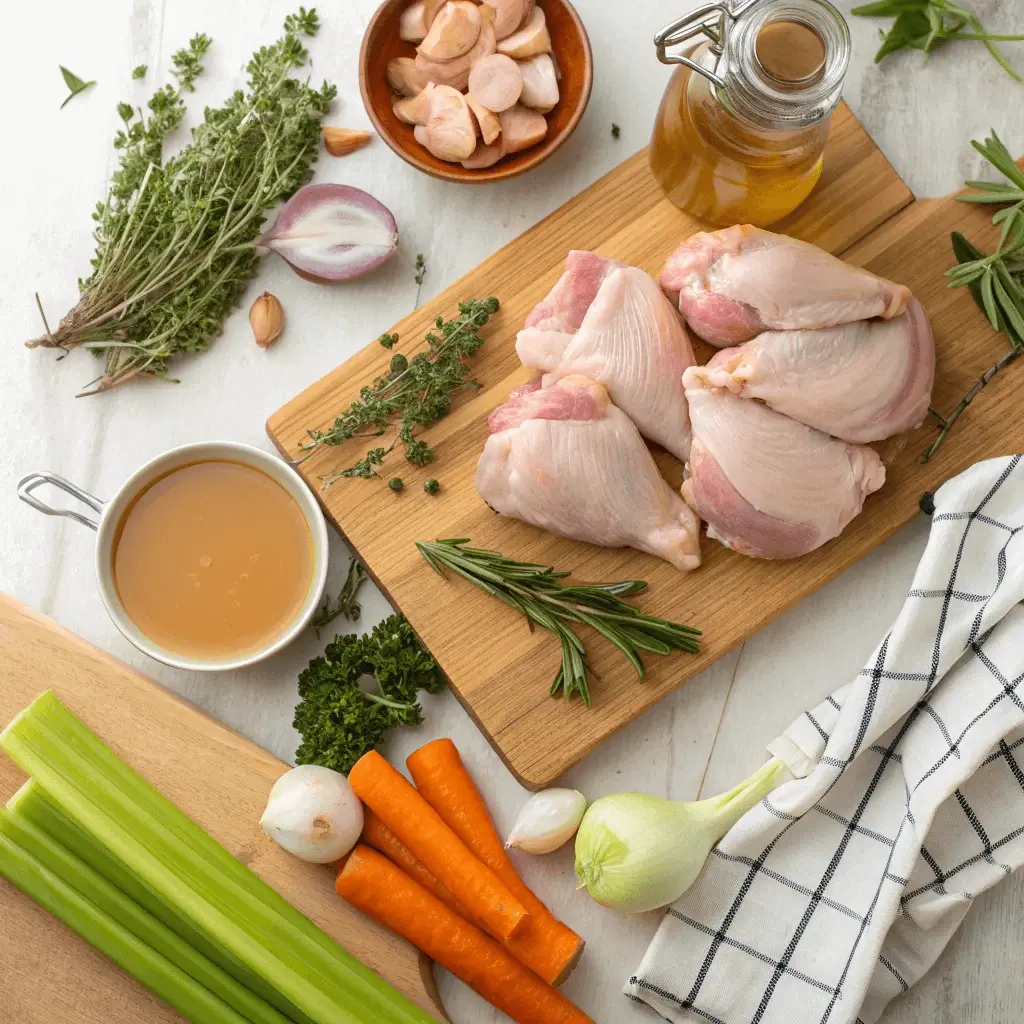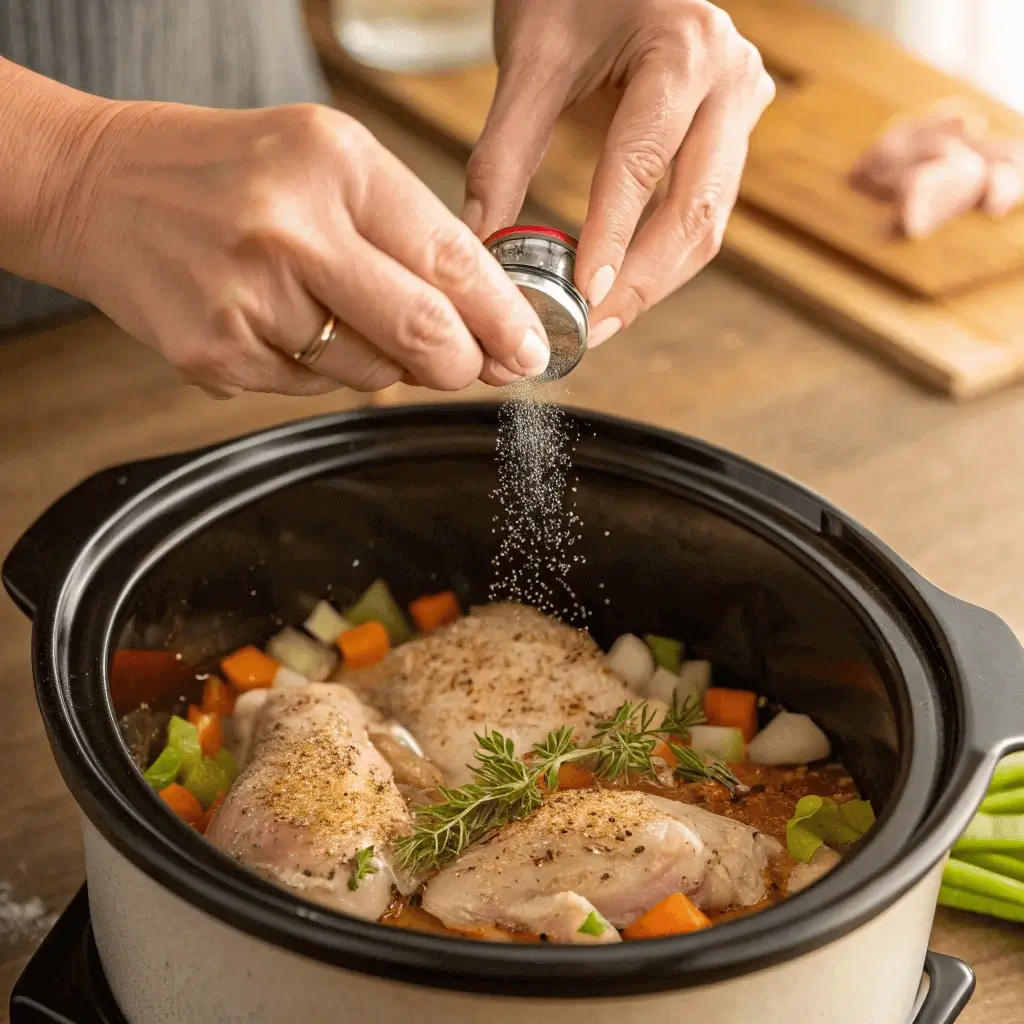Crock pots, Chicken Rubbery in the Crock Pot also known as slow cookers, have earned their place as a staple in many kitchens due to their convenience and ability to create tender, flavorful meals with minimal effort. However, despite their reputation for producing melt-in-your-mouth dishes, there’s one common issue that can leave home cooks scratching their heads: rubbery chicken. If you’ve ever pulled the lid off your crock pot, only to find that your chicken has turned out tough, dry, and rubbery, you’re not alone. This frustrating outcome can ruin an otherwise perfect meal and leave you wondering where you went wrong.
In this comprehensive guide, we’ll dive deep into the reasons why your chicken might turn out rubbery in the crock pot, explore the science behind slow cooking, and provide actionable tips to ensure your chicken turns out tender and juicy every time. Whether you’re a seasoned crock pot user or a beginner, this article will equip you with the knowledge and techniques to master the art of slow-cooked chicken.
Table of Contents
Why You’ll Love This Guide
If you’ve ever been disappointed by rubbery chicken from your crock pot, this guide is here to help. We’ll not only explain the common mistakes that lead to this issue but also provide practical solutions to prevent it from happening again. You’ll learn how to choose the right cuts of chicken, adjust cooking times, and use your crock pot to its full potential. By the end of this article, you’ll be able to confidently create tender, flavorful chicken dishes that will impress your family and friends.
The Science Behind Slow Cooking
To understand why chicken can turn out rubbery in a crock pot, it’s important to understand how slow cooking works. Crock pots use low, consistent heat over several hours to break down the connective tissues in meat, resulting in tender, flavorful dishes. This method is ideal for tougher cuts of meat like beef brisket or pork shoulder, which have a lot of collagen that breaks down into gelatin during the slow cooking process.
However, chicken is a lean protein, meaning it has less fat and connective tissue compared to other meats. While this makes chicken a healthier option, it also makes it more susceptible to overcooking. When chicken is cooked for too long or at too high a temperature, the proteins in the meat tighten and squeeze out moisture, leading to a dry, rubbery texture. Understanding this science is the first step to avoiding rubbery chicken in your crock pot.
Common Reasons for Rubbery Chicken
There are several reasons why your chicken might turn out rubbery in the crock pot. Let’s explore the most common culprits:
1. Overcooking
Overcooking is the number one reason for rubbery chicken. While slow cookers are designed to cook food over long periods, chicken doesn’t need as much time as tougher cuts of meat. Cooking chicken for too long can cause the proteins to tighten and expel moisture, resulting in a dry, rubbery texture.
2. Using the Wrong Cut
Not all chicken cuts are created equal. Lean cuts like chicken breasts are more prone to becoming rubbery when overcooked. Dark meat, such as thighs or drumsticks, has more fat and connective tissue, making it more forgiving and better suited for slow cooking.
3. Insufficient Liquid
Slow cookers rely on moisture to create steam and keep food tender. If there isn’t enough liquid in the pot, the chicken can dry out and become rubbery. Always ensure there’s enough broth, sauce, or water to cover the chicken partially.
4. High Heat Setting
Using the high heat setting for too long can cause chicken to cook too quickly, leading to a rubbery texture. The low heat setting is ideal for slow cooking, as it allows the chicken to cook gently and retain moisture.
5. Not Trimming Excess Fat
While some fat is necessary for flavor and moisture, too much fat can create a greasy texture and contribute to rubbery chicken. Trim excess fat before adding the chicken to the crock pot.
6. Opening the Lid Too Often
Every time you open the crock pot lid, heat and steam escape, which can extend the cooking time and dry out the chicken. Resist the urge to check on your chicken too frequently.

How to Prevent Rubbery Chicken
Now that we’ve identified the common reasons for rubbery chicken, let’s explore how to prevent it. Follow these tips to ensure your chicken turns out tender and juicy every time:
1. Choose the Right Cut
Opt for chicken thighs or drumsticks instead of breasts. These cuts have more fat and connective tissue, which break down during slow cooking to create a tender, juicy texture. If you prefer chicken breasts, consider using bone-in, skin-on breasts for added moisture.
2. Monitor Cooking Time
Chicken doesn’t need as much time as other meats in a slow cooker. Here’s a general guide:
- Chicken Breasts: 4-6 hours on low or 2-3 hours on high.
- Chicken Thighs/Drumsticks: 6-8 hours on low or 3-4 hours on high.
Use a meat thermometer to ensure the internal temperature reaches 165°F (74°C). Avoid cooking chicken for longer than necessary, as this can lead to a rubbery texture.
3. Add Enough Liquid
Ensure there’s enough liquid in the crock pot to keep the chicken moist. Use broth, sauce, or water to cover the chicken partially. Avoid overfilling the pot, as this can dilute the flavors.
4. Use the Low Heat Setting
Stick to the low heat setting for most slow-cooked chicken dishes. This allows the chicken to cook gently and retain moisture. Reserve the high heat setting for shorter cooking times or when you’re in a hurry.
5. Avoid Opening the Lid
Resist the urge to open the crock pot lid frequently, as this releases heat and steam, extending the cooking time and potentially drying out the chicken.
6. Brine the Chicken
Brining chicken before cooking can help it retain moisture. Soak the chicken in a mixture of water, salt, and sugar for 1-2 hours before adding it to the crock pot.
7. Layer Ingredients Properly
Place vegetables and other ingredients that take longer to cook at the bottom of the pot, and place the chicken on top. This ensures even cooking and prevents the chicken from drying out.

Tips for Perfect Crock Pot Chicken
Here are some additional tips to help you achieve perfectly cooked chicken in your crock pot:
- Season Well: Use a mix of herbs, spices, and aromatics to enhance the flavor of your chicken.
- Add Dairy Last: If your recipe includes dairy (like cream or cheese), add it during the last 30 minutes of cooking to prevent curdling.
- Use a Meat Thermometer: Check the internal temperature of the chicken to ensure it’s cooked through but not overdone.
- Shred the Chicken: If you’re making shredded chicken, remove it from the crock pot once it’s cooked and shred it with two forks. Return it to the pot to soak up the flavors.
FAQs About Rubbery Chicken in the Crock Pot
Q: Can I fix rubbery chicken?
A: Unfortunately, once chicken becomes rubbery, it’s difficult to restore its tenderness. However, you can shred it and use it in soups, stews, or casseroles where moisture is added back.
Q: Should I brown the chicken before adding it to the crock pot?
A: Browning the chicken before slow cooking can enhance the flavor and texture, but it’s not necessary. If you’re short on time, you can skip this step.
Q: Can I cook frozen chicken in the crock pot?
A: It’s not recommended to cook frozen chicken in a crock pot, as it can spend too much time in the “danger zone” (40°F to 140°F), increasing the risk of bacterial growth. Thaw the chicken before cooking.
Q: How do I know when the chicken is done?
A: Use a meat thermometer to check the internal temperature. Chicken is done when it reaches 165°F (74°C).
Q: Can I use boneless, skinless chicken breasts in the crock pot?
A: Yes, but be cautious with cooking time. Boneless, skinless chicken breasts are lean and can easily become rubbery if overcooked. Cook them for 4-6 hours on low or 2-3 hours on high.
Conclusion
Rubbery chicken in the crock pot can be disappointing, but with the right techniques, you can avoid this common pitfall. By choosing the right cut, monitoring cooking time, and ensuring sufficient moisture, you can achieve tender, flavorful chicken every time. Whether you’re making a hearty stew, a creamy casserole, or a simple shredded chicken dish, these tips will help you master the art of slow cooking.
So, dust off your crock pot, grab your ingredients, and get ready to enjoy perfectly cooked chicken without the rubbery texture. With a little practice and attention to detail, you’ll be able to create delicious, tender chicken dishes that your family and friends will love. Happy slow cooking!
This expanded article provides a comprehensive guide to understanding and preventing rubbery chicken in the crock pot. With these tips and tricks, you’ll be able to create delicious, tender chicken dishes that your family and friends will love. Happy slow cooking!

